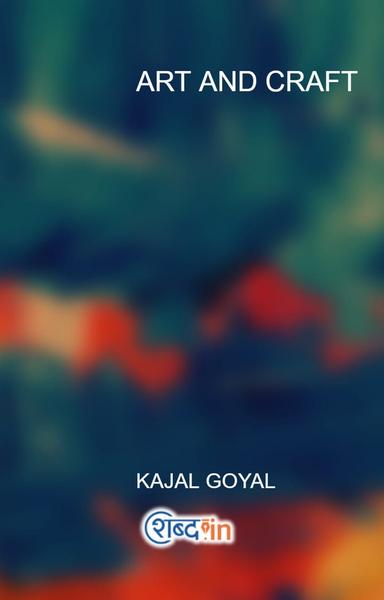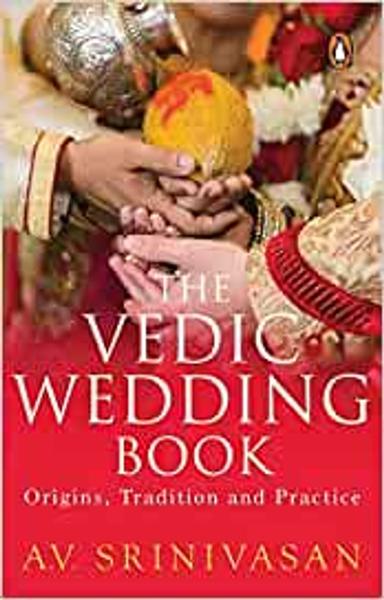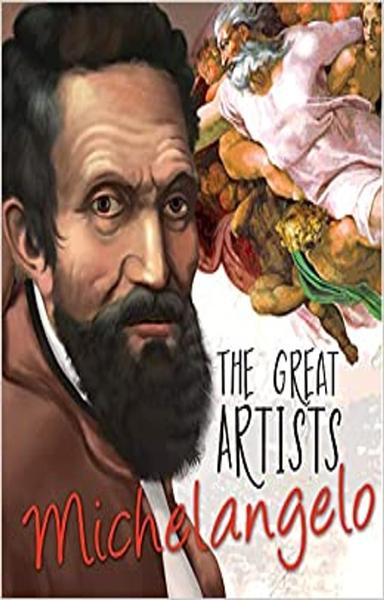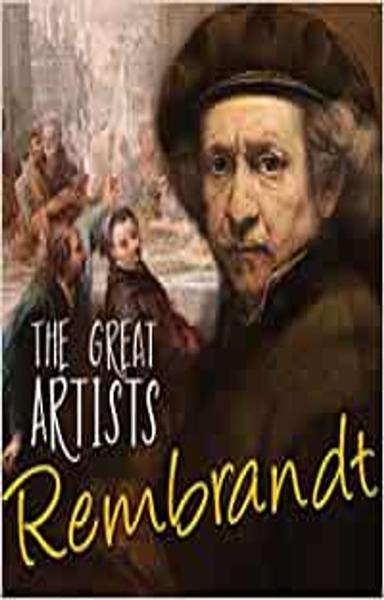WEdo not know how art began any more than we know how language
started. If we take art to mean such activities as building temples and
houses, making pictures and sculptures, or weaving patterns, there is no people in all the world without art. If, on the other hand, we mean by art some
kind of beautiful luxury, something to enjoy in museums and exhibitions or something special to use as a precious decoration in the best parlour, we must realize that
this use of the word is a very recent development and that many of the greatest
builders, painters or sculptors of the past never dreamed of it. We can best understand this difference if we think of architecture. We all know that there are beautiful buildings and that some of them are true works of art. But there is scarcely any
building in the world which was not erected for a particular purpose. Those who
use these buildings as places of worship or entertainment, or as dwellings, judge them first and foremost by standards of utility. But apart from this, they may like or dislike the design or the proportion of the structure, and appreciate the efforts of the good architect to make it not only practical but 'right'. In the past the attitude
to paintings and statues was often similar. They were not thought of as mere
20 Strange Beginnings
works of art but as objects which had a definite function. He would be a poor judge
of houses who did not know the requirements for which they were built. Similarly, we are not likely to understand the art of the past if we are quite ignorant of the aims
it had to serve. The further we go back in history, the more definite but also the more strange are the aims which art was supposed to serve. The same applies if we
leave towns and cities and go to the peasants or, better still, if we leave our civilized countries and travel to the peoples whose ways of life still resemble the conditions
in which our remote ancestors lived. We call these people 'primitives' not because
they are simpler than we are—their processes of thought are often more complicated
than ours—but because they are closer to the state from which all mankind once
emerged. Among these primitives, there is no difference between building and
image-making as far as usefulness is concerned. Their huts are there to shelter them
from rain, wind and sunshine and the spirits which produce them ; images are made
to protect them against other powers which are, to them, as real as the forces of
nature. Pictures and statues, in other words, are used to work magic.
We cannot hope to understand these strange beginnings of art unless we try to enter into the mind of the primitive peoples and find out what kind of experience
it is which makes them think of pictures, not as something nice to look at, but as something powerful to use. I do not think it is really so difficult to recapture this
feeling. All that is needed is the will to be absolutely honest with ourselves and see whether we, too, do not retain something of the 'primitive' in us. Instead of
beginning with the Ice Age, let us begin with ourselves. Suppose we take a picture of our favourite cricketer or film star from today's paper—would we enjoy taking a needle and poking out the eyes ? Would we feel as indifferent about it as if we poked
a hole anywhere else in the paper ? I do not think so. However well I know with my
waking thoughts that what I do to his picture makes no difference to my friend or
hero, I still feel a vague reluctance to harm it. Somewhere there remains the absurd
feeling that what one does to the picture is done to the person it represents. Now,
if I am right there, if this queer and unreasonable idea really survives, even among
us, into the age of atom bombs and radios, it is perhaps less surprising that such ideas
existed almost everywhere among the so-called primitive peoples. In all parts of the world medicine men or witches have tried to work magic in some such way—they have made little images of an enemy and have then pierced the heart of the wretched
doll, or burnt it, and hoped that their enemy would suffer. Even the guy we burn
on Guy Fawkes Day is a remnant of such a superstition. Negroes in Africa are sometimes as vague as little children about what is a picture and what is real. On
one occasion, when a European artist made drawings of their cattle, the natives were distressed: 'If you take them away with you, what are we to five on?'
All these si range ideas are important because they may help us to under stand the
oldest paintings which have come down to us. These paintings are as old as any
trace of human skill. They date from the Ice Age or thereabouts, when our
ancestors, sheltered in caves, hunted huge game and knew only the rudest of
stone implements. And yet, on the walls and ceilings of such caves, particularly in Spain and southern France, paintings have been discovered, mainly of these animals, reindeer, bison and wild horses (Figs. 19, 20, 21). Most of these paintings
are astonishingly vivid and lifelike, much more so than we might have expected. But it is very unlikely that they were made for the purpose of decorating the walls of these dark caves. In the first place, they are often found deep inside the mountain,
far away from the places where man lived. Secondly, they are often put there higgledy-piggledy, one on top of the other, without any apparent order or design. It
is much more likely that these are the oldest relics of that universal belief in the power of picture-making; in other words, that these primitive hunters thought that
if they only made a picture of their prey—and perhaps belaboured it with their spears or stone axes—the real animals would also succumb to their power. Of course, this is guesswork—but guesswork pretty weil supported by the use of art among those primitive peoples of our own day who have still preserved their ancient customs. True, we do not find any now, as far as I know, who try to work
exactiy this kind of magic; but most art for them is also closely bound up with
similar ideas about the power of images. There are still primitive peoples who use nothing but stone implements and who scratch pictures of animals on rocks for magic purposes. There are other tribes who have regular festivals when they dress up as animals and move like animals in solemn dances. They, too, believe that somehow this will give them power over their prey. Sometimes they even believe that certain animals are related to them in some fairy-tale manner, and that the whole tribe is a wolf tribe, a raven tribe or a frog tribe. It sounds strange enough, but we must not forget that even these ideas are not as far removed from our own times
as one might think. The Romans believed that Romulus and Remus had been suckled by a she-wolf, and they had an image in bronze of the she-wolf on the sacred Capitol
in Rome. Even up to our own times, under Mussolini, they always had a living she-wolf in a cage near the steps to the Capitol. No living lions are kept on Trafalgar Square—but the British Lion still leads a vigorous life in the pages of Punch. Of course, there remains a vast difference between this kind of heraldry and
cartoon symbolism and the deep seriousness with which savages look on their relationship with the totem, as they call their animal relatives. For it seems that they sometimes live in a kind of dream-world in which they can be man and animal
at the same time. Many tribes have special ceremonies in which they wear masks
with the features of these animals, and when they put them on they seem to feel that they are transformed, that they have become ravens, or bears. It is very much
as if children played at pirates or detectives till they no longer knew where playacting ended and reality began. But with children there is always the grown-up
B
24 Strange Beginnings
world about them, the people who tell them 'Don't be so noisy', or 'It is nearlybed-time'. For the savage there is no such other world to spoil the illusion, becauseall the members of the tribe take part in the ceremonial dances and rites with theirfantastic games of pretence. They have all learned their significance from formergenerations and are so absorbed in them that they have little chance of steppingoutside it and seeing their behaviour critically. We all have beliefs which we takeas much for granted as the 'primitives' take theirs—usually so much so that we arenot even aware of them unless we meet people who question them.
All this may seem to have little to do with art, but in fact these conditionsinfluence art in many ways. Many of the artists' works are meant to play a part inthese strange customs, and what matters then is not whether the sculpture orpainting is beautiful by our standards, but whether it 'works', that is to say whetherit can perform the required magic. Moreover, the artists work for people of their own tribe who know exactly what each form or each colour is meant to signify. Theyare not expected to change these things, but only to apply all their skill andknowledge to the execution of their work. Again we have not to go far to think of parallels. The point of a national flag
is not to be a beautifully coloured piece of cloth which any maker can changeaccording to his fancy—the point of a wedding ring is not to be an ornament whichcan be worn or changed as we think fit. Yet, even within the prescribed rites andcustoms of our lives, there remains a certain element of choice and scope for tasteand skill. Let us think of the Christmas tree. Its principal features are laid down bycustom. Each family, in fact, has its own traditions and its own predilections with-out which the tree does not look right. Nevertheless, when the great moment comesto decorate the tree there remains much to be decided. Should this branch get a candle ? Is there enough tinsel on top ? Does not this star look too heavy or this sidetoo overloaded ? Perhaps to an outsider the whole performance would look ratherstrange. He might think that trees are much nicer without tinsel. But to us, whoknow the significance, it becomes a matter of great importance to decorate thetree according to our idea. Primitive art works on just such pre-established lines, and yet leaves the artist scope to show his metde. The technical mastery of some native craftsmen is indeed astonishing. We should never forget, when talking of primitive art, that theword does not imply that the artists have only a primitive knowledge of their craft. On the contrary ; many native tribes have developed a truly amazing skill in carving,in basket work, in the preparation of leather, or even in the working of metals. If werealize with what simple tools these works are made we can only marvel at thepatience and sureness of touch which these primitive craftsmen have acquiredthrough centuries of specialization. The Maoris of New Zealand, for instance, havelearned to work veritable wonders in their wood-carvings (Fig. 23). Of course, the
fact that a thing was difficult to make does not necessarily prove that it is a work of
art. If it were so, the men who make models of sailing ships in glass bottles would
rank among the greatest artists. But this proof of native skill should warn us against the belief that their work looks odd because they cannot do it any better. It is not
their standard of craftsmanship which is different from ours, but their ideas. It is important to realize this from the outset, because the whole story of art is not a
story of progress in technical proficiency, but a story of changing ideas and require- ments. There is increasing evidence that under certain conditions native artists can produce work which is just as correct in the rendering of nature as the best work
done in any art class. Only recently a number of bronze heads have been discovered
in Nigeria which are the most convincing likenesses of negroes that can be imagined (Fig. 24). They seem to be many centuries old, and there is no reason to
believe that the native artists learned their skill from anyone outside. What, then, can be the reason for so much of primitive art looking utterly strange ? Perhaps we should return to ourselves and the experiments we can all perform. Let us take a piece of paper or ink-blotter and scrawl on it any doodle of a
face. Just a circle for the head, a stroke for the nose, another for the mouth. Then
look at the eyeless doodle. Does it not look unbearably sad ? The poor creature cannot see. We feel we must 'give it eyes'—and what a relief it is when we make the two dots and at last it can look at us! To us all this is a joke, but to the native it
is not. A wooden pole with these few essential forms is to him new and different. He takes the impression it makes as a token of its magic power. There is no need
to make it any more lifelike provided it has eyes to see. Fig 25 shows the figure of a Polynesian 'God of War' called Oro. The Polynesians are excellent carvers, but
they obviously did not find it essential to make this a correct representation of a man. All we see is a piece of wood covered with woven fibre. Only its eyes and arms
are roughly indicated by this fibre braid, but once we notice them, this is enough to give the pole a look of uncanny
power. We are still not quite in the realm of art, but our doodle experiment may teach us something more. Let us vary the shape of our scribbled face in
all possible ways. Let us change
the shape of the eyes from dots
to crosses or any other form
which has not the remotest resemblance to real eyes. Let us make the nose a circle and the mouth a scroll. It will hardly
matter, as long as their relative position remains roughly the same. Now to the native artist this discovery probably meant much. For it taught him to build up his figures or faces out of those forms which he
liked best and which were most
suited to his particular craft. The result might not be very
lifelike, but it would retain a
certain unity and harmony of
pattern which is just what our
first doodle probably lacked.
Fig. 26 shows a mask from New
Guinea. It may not be a thing of beauty, but it is not meant
to be—it is intended for a ceremony in which the young men of the village dress up as ghosts and frighten the women
and children. But, however
fantastic or repulsive this 'ghost' may look to us, there is something satisfying in the way the artist has built up his face out of geometrical shapes. In some parts of the world primitive artists have developed elaborate systems to represent the various figures and totems of their myths in ornamental fashion. Among the Red Indians of North America, for instance, artists combine a very acute observation of natural forms with this disregard for what we called the real appear- ance of things (Fig. 22). As hunters, they know the true shape of the eagle's beak,
Strange Beginnings 29
or the beaver's ears, much better than any of us. But they regard one such feature
as quite sufficient. A mask with an eagle's beak just is an eagle. Fig 27 is a model
of a chieftain's house among the Haida tribe of Red Indians with three so-called totem poles in front of it. We may see only a jumble of ugly masks, but to the native
this pole illustrates an old legend of his tribe. To us the legend itself is nearly as odd
and incoherent as its representation, but we ought no longer to feel surprised that native ideas differ from ours. Here it is: Once there was a young man in the town of Gwais Kun who used to laze about on his bed the whole day till his mother-in-law remarked on it ; he felt ashamed, went away and
decided to slay a monster which lived in a lake and fed on humans and whales. With the help of a fairy bird he made a trap of a tree trunk and dangled two children over it as bait. The monster was caught, the young man dressed in its skin and caught fishes which he
regularly left on his critical mother-in-law's doorstep. She was so flattered at these unexpected offerings that she thought of herself as a powerful witch. When the young man undeceived her at last, she felt so ashamed that she died.
All the participants in this tragedy are represented on the central pole. The mask
below the entrance is one of the whales the monster used to eat. The big mask above
the entrance is the monster; on top of it the human form of the unfortunate motherin-law. The mask with the beak over her is the bird who helped the hero, he himself
is seen further up dressed in the monster's skin, with fishes he has caught. The
human figures at the end are the children the hero used as bait. To us such a work may seem the product of an odd whim, but to those who
made such things this was a solemn undertaking. It took years to cut these huge
poles with the primitive tools at the disposal of the natives, and sometimes the whole male population of the village helped in the task. It was to mark and honour
the house of a powerful chieftain. Without explanation we may not be able to see the point of these works on which
so much love and labour were spent. It is frequently so with works of primitive art, but even where the explanation is lacking, we can appreciate the weird thoroughness with which the shapes of nature are transformed into a consistent pattern. For there are many great works of this kind dating from the strange beginnings of
art whose exact explanation is probably lost for ever but which we can still admire.
All that remains to us of the great civilizations of ancient America is their 'art'.
I have put the word in quotes not because these mysterious buildings and images
lack beauty—some of them are quite fascinating—but because we should not approach them with the idea that they were made for the sake of pleasure or
'decoration'. The terrifying carving of a death head from an altar of the ruins of Copan in present Honduras (Fig. 28) reminds us of the gruesome human sacrifices which were demanded by the religions of these peoples. However little may be known about the exact meaning of such carvings, the thrilling efforts of the scholars
who have rediscovered these works and have tried to get at their secrets havetaught us enough to compare them with other works of primitive cultures. Ofcourse, these peoples were not primitive in the usual sense of the word. When the Spanish and Portuguese conquerors of the sixteenth century arrived, the Aztecs
in Mexico and the Incas in Peru ruled over mighty empires. We also knowthat in earlier centuries the Mayas of Central America had built big cities anddeveloped a system of writing and ofcalculating calendars which is anything but primitive. Like the negroes ofNigeria the pre-Columbian Americanswere perfectiy capable of representing
the human face in a lifelike manner. The ancient Peruvians liked to shape
certain vessels in the form of humanheads which are strikingly true to nature (Fig. 30). If most works of these
civilizations look weird and unnatural
to us, the reason lies probably in the
ideas they are meant to convey.
Fig. 29 represents a statue from Mexico which is believed to date from
the Aztec period, the last in Mexican
history. Scholars think that it represents the rain-god, whose name was
Tlaloc. In these tropical zones rain
is often a question of life or death
for the people, for without rain their crops may fail and they may have to starve. No wonder that the god of rains andthunderstorms assumes in their minds the shape of a terrifyingly powerful demon.The lightning in the sky appears to their imagination like a big serpent, and manyAmerican peoples therefore considered the rattlesnake to be a sacred and mightybeing. If we look more closely at the figure of Tlaloc we see, in fact, that his mouth is formed of two heads of rattlesnakes facing each other with their big poisonous fangsprotruding from their jaws and that his nose, too, seems to be formed out of thetwisted bodies of the snake. Perhaps even his eyes might be seen as coiled serpents.We see how far the idea of 'building up' a face out of given forms can lead awayfrom our ideas of lifelike sculpture. We also get an inkling of the reasons which maysometimes have led to this method. It was certainly fitting to form the image of therain-god out of the body of the sacred snakes which embodied the power of light- ning. If we ponder the strange mentality which created these uncanny idols we maybegin to understand how image-making in these early civilizations was not onlyconnected with magic and religion but was also the first form of writing. The sacredserpent in ancient Mexican art was not only the picture of a rattlesnake but couldalso develop into a sign for lightning and so into a character by which a thunder-storm could be commemorated or, perhaps, conjured up. We know very little aboutthese mysterious origins, but if we want to understand the story of art we may dowell to remember once in awhile that pictures and letters are really blood-relations.











